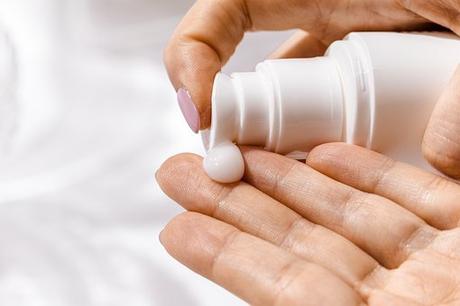How to choose the right moisturizer
With age, the skin tends to lose water and the moisturizer becomes essential. But do you know what ingredients are in creams and how to choose the best one for you?
A moisturizer increases the amount of water in the skin, fixing it or preventing its loss. But, in addition, it can carry other nutrients.

The division between a moisturizing and nourishing cream is not as categorical as cosmetic advertising sometimes claims, since choosing a good moisturizer can also have a nourishing effect
How is your skin? These are the care you need👈👈WHY DO YOU NEED TO HYDRATE YOUR SKIN
The skin is made up mostly of water, which is stored in its deepest layers. In an optimal state, in order to hydrate all the layers and perform its protective function correctly, this water migrates little by little until it reaches the surface of the skin (the stratum corneum), where it evaporates.
This last layer is the most visible and must be around 13% hydrated to show a luminous and radiant appearance. Below that amount, it begins to appear somewhat rough and dull, and wrinkles become noticeably more marked.
6 Floral Waters to Take Care of Your Skin 👈👈
Using a moisturizing cosmetic helps you maintain optimal water levels, but there are many causes that influence skin hydration :
- environmental factors
- the amount of water ingested
- contact with certain detergent products
- skin type
- age
- some pathologies
WHAT CAN A MOISTURIZER BRING
Any cream consists of an aqueous phase, a fatty part, an emulsifying substance that binds both phases, and, if necessary, a product that allows to preserve the product or improve its cosmetic qualities.
4 Homemade Masks To Regenerate Your Skin in 10 Minutes👈👈
- The aqueous phase
It usually constitutes 60% of the product. All moisturizing cream is made up mostly of water. In addition, there are dissolved hydrophilic substances, such as:
- Hygroscopic substances, capable of absorbing and retaining water in quantity: glycerin (the most classic and frequent), sorbitol, propylene glycol (not highly recommended), and macromolecules of natural origin such as hyaluronic acid, collagen, and some glycans.
- The urea, which is a natural moisturizer that is found in the skin.
- Substances capable of retaining water by forming a gel that makes it difficult to evaporate, such as aloe gel, carboxymethylcellulose, and hydroxyethylcellulose.
- Amino acids and sugars capable of binding and retaining water, as well as helping to form collagen and other proteins.
- Principles active as vitamin C, with antioxidant and trace minerals needed.
- The oil phase
The last layer of the skin is a lipidic barrier, that is, a fat barrier. Therefore, the cream that you apply has to contain a certain amount of oil to be able to penetrate. In addition to oil, in this phase there are substances with determining functions for the skin:
- Fatty acids, which help restore the lipid barrier. Of special importance are the polyunsaturated omega-3, -6, and -7, whose deficit causes dryness and roughness of the skin.
- Substances that prevent water loss by occlusive closing pores. Among them are vegetable waxes (carnauba, candelilla) or bees. Being natural, they are very similar to the skin and do not cause the problems of petroleum derivatives, silicones, vaseline, paraffin, and other hydrocarbons.
- Substances are similar to the sebum produced naturally by the skin, such as phospholipids, ceramides, and fat-soluble vitamins (A and D).
- Emulsifiers or surfactants
They make it possible to mix both phases. Although they are found in small amounts, they can change the permeability of the skin and cause it to lose its barrier properties. Therefore, it is advisable to choose non-damaging surfactants and avoid those derived from glycols, such as PEGs.
Some preservatives can also be dangerous and must be taken into account when choosing the cream.
Prepare Your Own Spa at Home ... and Relax!👈👈
HOW TO CHOOSE AND APPLY YOUR MOISTURIZER
- It must have a maximum of natural ingredients
- It must be adapted to the type of skin. In the case of a young person with healthy skin, the goal will be to maintain it; in oily or combination skin, a correct regulation of this sebaceous secretion should be sought; and on dry and mature skin, products that nourish and hydrate it.
- Petroleum-derived occlusive moisturizers and toxic preservatives such as phenoxyethanol, formaldehyde, and paraben derivatives should be avoided
- In general, a moisturizer should be applied in the morning, while a nourishing one is recommended more in the evening.
- It is applied to clean skin, after toner, serum, and any treatment, but always before a sunscreen.
ORIGINALLY WRITTEN BY - FITNESS YODHA

